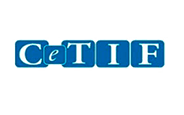The evolution of advisory platforms
By Federico Lusian

The experience of Parva Consulting on which tools and features platforms can offer to truly boost the advisory business
Intriguing growth rates have been observed in the European financial advisory sector, and this upward trend is anticipated to continue in the future years. In order to increase efficiency and effectiveness, advisors are putting more and more effort into improving their internal procedures and adopting automation. Technological platforms play an important role in supporting future corporate growth.
Parva Consulting has encountered many situations and conducted several software selection assessments for its clients in the Discretionary and Advisory arena. Based on what we’ve seen in the industry, there are four major areas that can be defined as critical in advisory platforms, and different suppliers focus the majority of their efforts on these, delivering differentiating functionality across each of them.
This article seeks to examine the key components of client onboarding, model portfolio choice, target financial instrument rating, and CRM dashboards, offering a thorough grasp of their related features and the advantages they provide. By examining these components in detail, we can gain valuable insights into how they contribute to the success and efficiency of financial advisory practices.
1 – Client Onboarding
- Customisation of MiFid questionnaires to gather relevant information about clients’ investment preferences and risk tolerance.
- Tailoring algorithms to define the client’s risk profile based on the questionnaire responses.
- Customisation of the weight assigned to each response, ensuring accurate risk assessment.
- Digital signature of the advisory contract, enabling a seamless and secure onboarding process.
- Integration with external dedicated solutions, such as CRM platforms, to consolidate client information and enhance data management.
2 – Model Portfolio Selection
- Supporting advisors in defining/selecting the most suitable model portfolio (or to more general “investment strategies” – giving more flexibility for the selection of target financial instruments) based on clients’ financial goals and risk profiles.
- Streamlining the management of order proposals (e.g.: supporting digital signature of order proposals by clients, reducing paperwork).
- Emphasising environmental, social, and governance (ESG) aspects through tools for managing ESG considerations in order proposals.
- Incorporating auto-rebalancing and portfolio optimisation features to maintain portfolio alignment with clients’ objectives.
- Implementing compliance controls to ensure adherence to regulatory frameworks such as MiFid, IDD, and ESG criteria.
3 – Selection and Ranking of Target Financial Instruments
- Traditional “selection” tools that filter and identify suitable financial instruments based on specific criteria.
- Risk analytics tools to assess and manage the risk associated with selected instruments.
- Innovative “ranking” tools that allow customisation of criteria and weights to prioritise investment options.
- AI features such as Natural Language Understanding – e.g. to aid in creating order proposals directly from investment views.
- Performance analysis tool, leveraging availability of funds data or open APIs to interface info-providers.
- Integration with order execution systems for efficient trade execution.
4 – CRM & Dashboards
- Customisable client reporting to provide tailored investment updates, in some cases with the possibility to keep track of the overall picture of client assets, including non-financial assets, insurances and debt.
- Advisor dashboards with calendar of meetings with clients, with the possibility to keep track of topics discussed.
- Customisable alerting systems based on portfolio performance, ensuring prompt action on important events.
- Tracking of order proposals submitted to clients and “what if” analysis tools to evaluate how the portfolio would have performed if specific proposals were accepted/refused, helping the advisor to show the value of his/her support.
It is crucial to acknowledge that there is no universally applicable solution since each advisor has unique requirements that must be tailored to their specific business processes. As a result, adaptation and customisation are necessary for appropriate implementation. Considering the varying locations and requirements across Europe, Australasia, and the Americas, it becomes evident that location specificities (best practice and regulation) holds significant importance. Nonetheless, it remains imperative for us to offer a solution that aligns with our clients’ specific needs.
At Parva Consulting, we are tracking the development of advisory platforms and looking forward to intriguing developments. We thrive on having meaningful conversations with industry participants and are always happy to hear your opinions on hot topics. We look forward to hearing from you.
Share this article:

Evolution of fintech lending

Case Study – Digital transformation project for an international Loan & Leasing company

DORA and contractual arrangements










